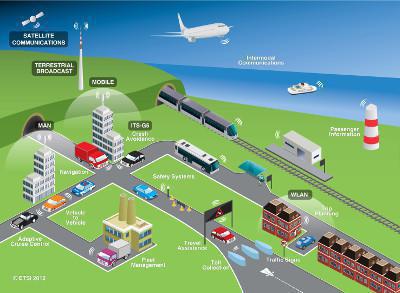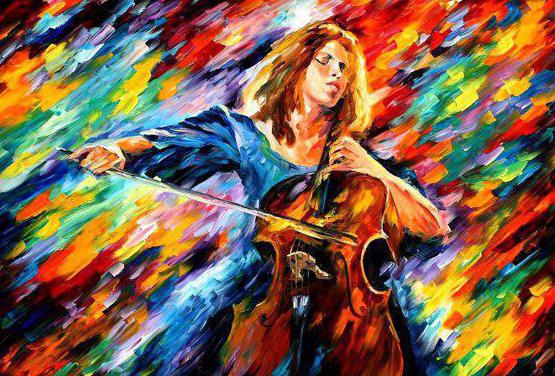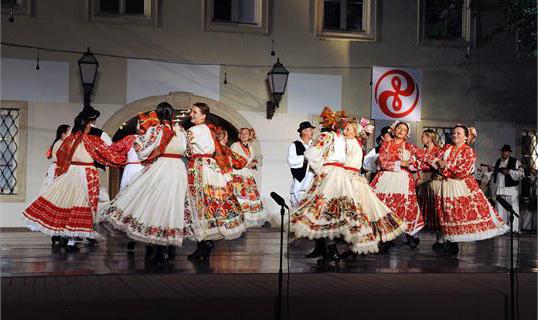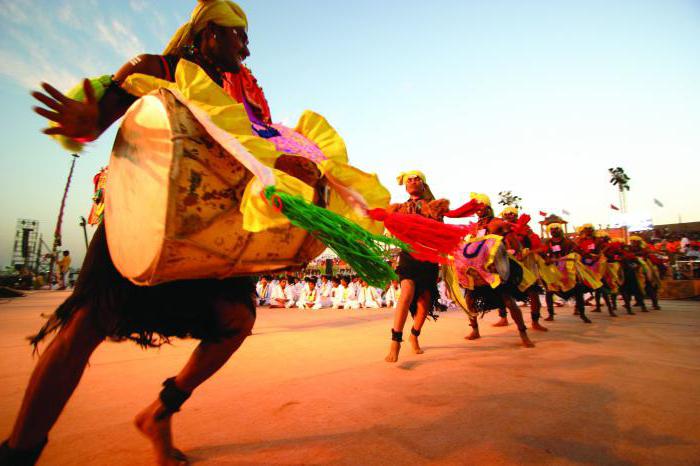The word "culture" is on the list of the most used in the modern language. But this fact does not testify to the knowledge of this concept, but to the ambiguity of the meanings hiding behind it, used both in everyday life and in scientific definitions.
Most of all, we are used to talking about spiritual and material culture. At the same time, it becomes clear to everyone that we are talking about theater, religion, music, gardening, agriculture and much more. However, the concept of culture is not at all limited to only these areas. The versatility of this word will be discussed in this article.
Definition of the term
The concept of culture includes a certain historical level in the development of society, as well as human abilities and forces, which are expressed in the forms and types of life organization. By this term we also understand the spiritual and material values created by people.

The world of culture, any phenomenon and object is not a consequence of natural forces. This is the result of the efforts made by man. That is why culture and society must be considered inextricably linked. Only this will allow us to understand the essence of this phenomenon.
Main components
All types of culture that exist in society include three main components. Namely:
- Concepts. These elements, as a rule, are contained in the language, helping a person to organize and organize his own experience. Each of us perceives the surrounding world through the taste, color and shape of objects. However, it is known that in different cultures reality is organized in different ways. And in this regard, language and culture become inseparable concepts. A person learns the words that he needs for orientation in the world through the assimilation, accumulation and organization of his experience. The close connection between language and culture can be judged by the fact that some peoples believe that “who” is only a person, and “what” is not only inanimate objects of the world, but also animals. And here it is worth considering. After all, people who value dogs and cats as a thing will not be able to treat them the same way as those who see their smaller brothers in animals.
- Relations. The formation of culture occurs not only through the description of those concepts that indicate to a person what the world consists of. In this process, certain ideas are involved about how all objects are interconnected in time, in space, according to their purpose. Thus, the culture of the people of a country differs in its own views on the concepts of not only the real, but also the supernatural world.
- Values. This element is also inherent in culture and represents the beliefs in society regarding those goals that a person needs to strive for. Different cultures have different values. And it depends on the social structure. Society itself chooses what is considered to be a value and what is not.
Material culture
Modern culture is a rather complex phenomenon, which for completeness is considered in two aspects - static and dynamic. Only in this case, a synchronous approach is achieved, allowing to study this concept as accurately as possible.
Statics leads the structure of culture, dividing it into material, spiritual, artistic and physical. Let's consider each of these categories in more detail.
And let's start with the material culture. This definition refers to the environment that surrounds a person.Every day, thanks to the work of each of us, the material culture is improved and updated. All this leads to the emergence of a new standard of living that changes the needs of society.
Features of a material culture are that its objects are means and instruments of labor, life and housing, that is, all that is the result of human production. At the same time, several of the most important areas are highlighted. The first of these is agriculture. This area includes animal breeds and plant varieties bred as a result of breeding. Soil cultivation also applies. The survival of a person directly depends on these links of material culture, since he receives not only food products from them, but also raw materials used in industrial production.
The structure of material culture also includes buildings. These are places intended for people's life, in which various forms of being and various human activities are realized. In the field of material culture includes facilities designed to improve living conditions.
To ensure the full diversity of types of mental and physical labor, a person uses various tools. They are also one of the elements of material culture. With the help of tools, people directly affect the processed materials in all sectors of their activity - in communications, transport, industry, agriculture, etc.
Part of material culture is transport and all available means of communication. These include:
- bridges, roads, airport runways, embankments;
- all transport - pipeline, water, air, railway, horse-drawn;
- railway stations, ports, airports, harbors, etc., built to ensure the operation of the vehicle.
With the participation of this area of material culture, the exchange of goods and people between settlements and regions is ensured. This, in turn, contributes to the development of society.

Another area of material culture is communication. It includes mail and telegraph, radio and telephone, computer networks. Communication, like transport, connects people together, giving them the opportunity to exchange information.
Another essential component of material culture is skills and knowledge. They are technologies that are used in each of the above areas.
Spiritual culture
This area is based on a creative and rational type of activity. Spiritual culture, in contrast to the material, finds its expression in a subjective form. At the same time, it satisfies the secondary needs of people. Elements of spiritual culture are morality, spiritual communication, art (artistic creation). One of its important components is religion.
Spiritual culture is nothing more than the ideal side of a person’s material work. After all, any thing created by people was originally designed and subsequently embodied certain knowledge. And being called to satisfy certain human needs, any product becomes a value for us. Thus, the material and spiritual forms of culture become inextricable with each other. This is especially evident in any of the works of art.

Due to the fact that the material and spiritual types of culture have such subtle differences, there are criteria for the exact attribution of a particular result of activity to one or another sphere. To do this, use the evaluation of objects for their intended purpose. A thing or phenomenon designed to satisfy the secondary needs of people is attributed to a spiritual culture. And vice versa. If objects are necessary to meet the primary or biological needs of a person, then they are classified as material culture.
The spiritual sphere has a complex composition.It includes the following types of culture:
- moral, including ethics, morality and morality;
- religious, which includes modern teachings and cults, ethnographic religiosity, traditional denominations and faiths;
- political, representing traditional political regimes, ideology and norms of interaction of political subjects;
- legal, which includes legislation, legal proceedings, law enforcement and the executive system;
- pedagogical, considered as practice and ideals of upbringing and education;
- intellectual in the form of science, history and philosophy.
It should be borne in mind that cultural institutions, such as museums and libraries, concert halls and courts, cinemas and educational institutions, also belong to the spiritual world.
This area has another gradation. It includes such areas:
- Projective activity. She offers drawings and ideal models of machines, structures, technical structures, as well as projects of social transformations and new forms of the political system. Everything that was created has the greatest cultural value. Today, projective activity is classified in accordance with the objects it creates into engineering, social, and pedagogical.
- The totality of knowledge about society, nature, man and his inner world. Knowledge is an essential element of spiritual culture. Moreover, the scientific sphere represents them most fully.
- Value-oriented activities. This is the third area of spiritual culture that is in direct connection with knowledge. It serves to evaluate objects and phenomena, filling the human world with meanings and meanings. This area is divided into such types of culture: moral, artistic and religious.
- Spiritual communication of people. It occurs in all forms defined by the objects of communication. The spiritual contact that exists between partners, during which information is exchanged, is the greatest cultural value. However, such communication takes place not only at the personal level. The results of the spiritual activity of society, which constitute its cultural fund accumulated over many years, find their expression in books, speech and works of art.
Communicating people with each other is extremely important for the development of culture and society. That is why it is worth considering a little more.
Human communication
The concept of speech culture determines the level of spiritual development of a person. In addition, she speaks of the value of the spiritual heritage of society. The culture of speech is an expression of respect and love for one's native language, which is directly related to the traditions and history of the country. The main elements of this area are not only literacy, but also the observance of generally recognized norms of the literary word.
The culture of speech includes the proper use of many other means of language. Among them: stylistics and phonetics, vocabulary, etc. Thus, truly cultural speech is not only correct, but also rich. And it depends on the lexical knowledge of man. In order to improve the culture of speech, it is important to constantly replenish your vocabulary, as well as read works of various thematic and stylistic directions. Such work will allow you to change the direction of thoughts from which words are formed.

The modern culture of speech is a very broad concept. It includes not only the linguistic abilities of man. This area cannot be considered without a common personality culture, which has its own psychological and aesthetic perception of people and the world around them.
Communication for a person is one of the most important moments of his life. And to create a normal communication channel, each of us needs to constantly maintain a culture of our speech.In this case, it will consist in politeness and attentiveness, as well as in the ability to maintain an interlocutor and any conversation. A culture of speech will make communication free and easy. After all, it will allow you to express your opinion, without offending anyone or hitting anyone. Well-chosen, beautiful words contain power stronger than physical strength. Speech culture and society are closely interconnected with each other. Indeed, at the level of the linguistic spiritual sphere, the way of life of the whole people is reflected.
Art culture
As already mentioned above, in each of the specific objects of the surrounding world, two spheres are simultaneously present - material and spiritual. This can be said about the artistic culture, which is based on a creative, irrational type of human activity and satisfies its secondary needs. What gave rise to this phenomenon? The ability of a person to creativity and emotional-sensory perception of the world.
Art culture is an integral element of the spiritual sphere. Its main essence is the reflection of society and nature. For this, artistic images are used.
This type of culture includes:
- art (group and individual);
- artistic values and works;
- cultural institutions that ensure its dissemination, development and preservation (demonstration sites, creative organizations, educational institutions, etc.);
- spiritual atmosphere, that is, the perception of art by society, public policy in this area, etc.

In a narrow sense, artistic culture is expressed in graphics and painting, literature and music, architecture and dance, a circus, photography and theater. All these are objects of professional and domestic art. Within each of them, works of an artistic nature are created - plays and films, books and paintings, sculptures, etc.
Culture and art, which is its integral part, facilitate the transfer by people of their subjective vision of the world, and also help a person to assimilate the experience accumulated by society and the correct perception of collective attitudes and moral values.
Spiritual culture and art, in which all its functions are represented, are an important part of society. So, in art there is a transformative activity of man. The transfer of information is reflected in culture in the form of human consumption of works of art. Value orienting activity is used to evaluate creations. Art is open to cognitive activity. The latter is manifested in the form of a specific interest in the works.
Cultural forms include such cultural forms as mass, elite, and folk. This also includes the aesthetic side of legal, economic, political activity and much more.
World and national culture
The level of material and spiritual development of society has another gradation. It is isolated by its carrier. In this regard, there are such basic types of culture as world and national. The first of them is a synthesis of the best achievements of the peoples living on our planet.
World culture is diverse in space and time. It is practically inexhaustible in its directions, each of which is striking in its richness of forms. Today this concept includes such types of cultures as bourgeois and socialist, developing countries, etc.
The pinnacle of the level of world civilization is advances in science, developed the latest technology, achievements in art.

But national culture is the highest form of development of ethnic culture, which is appreciated by world civilization. This includes the totality of the spiritual and material values of one or another people, as well as the methods of interaction with the social environment and nature practiced by it.Manifestations of national culture can be clearly seen in the activities of society, its spiritual values, moral standards, characteristics of lifestyle and language, as well as in the work of state and social institutions.
Types of crops according to the principle of distribution
There is another gradation of material and spiritual values. By the principle of their distribution, the following are distinguished: dominant culture, subculture and counterculture. The first of them includes a set of customs, beliefs, traditions and values that guide the bulk of society. But at the same time, any nation includes many groups of a national, demographic, professional, social and other nature. Each of them forms its own system of rules of conduct and values. Such small worlds are classified as subcultures. This form can be youth and urban, rural, professional, etc.
A subculture may differ from the prevailing behavior, language or outlook on life. But these two categories are never opposed to each other.
If any of the small cultural strata is in conflict with those values that dominate in society, then it is called counterculture.
Gradation of material and spiritual values by level and sources
In addition to the above, there are such forms of culture as elitist, popular and mass. A similar gradation characterizes the level of values and their creator.
For example, an elitist culture (high) is the fruit of the activities of a privileged part of society or professional creators who worked on its request. This is the so-called pure art, which in its perception is ahead of all art products existing in society.
Folk culture, in contrast to the elite, is created by anonymous creators who do not have professional training. That is why this type of culture is sometimes called amateur or collective. In this case, the term folklore is also applicable.
Unlike the two previous species, mass culture is not a carrier of either the spirituality of the people or the sophistication of the aristocracy. The greatest development of this direction began in the mid-20th century. It was during this period that the penetration of the media in most countries began.

Mass culture is inextricably linked with the market. This is an art for everyone. That is why it takes into account the needs and tastes of the whole society. The value of mass culture is incomparably lower than elitist and popular. It satisfies the immediate needs of members of society, quickly responding to every event in the life of the people and reflecting it in its works.
Physical education
This is a creative, rational type of human activity, expressed in bodily (subjective) form. Its main direction is the promotion of health with the simultaneous development of physical abilities. These activities include:
- a culture of physical development from general health exercises to professional sports;
- recreational culture that supports and restores health, which includes tourism and medicine.








